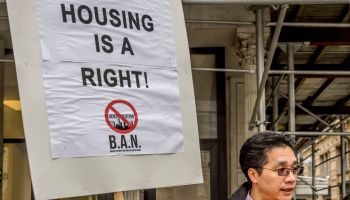Laid-off workers and aging baby boomers are flooding Social Security’s disability program with benefit claims, pushing the financially strapped system toward the brink of insolvency.
Applications are up nearly 50 percent over a decade ago as people with disabilities lose their jobs and can’t find new ones in an economy that has lost nearly 7 million jobs.
The stampede for benefits is adding to a growing backlog of applicants — many wait 2 years or more before their cases are resolved — and worsening the financial problems of a program that’s been running in the red for years.
New congressional estimates say the trust fund that supports Social Security disability will run out of money by 2017, leaving the program unable to pay full benefits, unless Congress acts. About 20 years later, Social Security’s much larger retirement fund is projected to run dry as well.
Much of the focus in Washington has been on fixing Social Security’s retirement system. Proposals range from raising the retirement age to limiting benefits for wealthy retirees. But the disability system is in much worse shape and its problems defy easy solutions.
The trustees who oversee Social Security are urging Congress to shore up the disability system by reallocating money from the retirement program, just as lawmakers did in 1994. That would provide only short-term relief at the expense of weakening the retirement program.
Claims for disability benefits typically increase in a bad economy because many disabled people get laid off and can’t find a new job. This year, about 3.3 million people are expected to apply for federal disability benefits. That’s 700,000 more than in 2008 and 1 million more than a decade ago.
“It’s primarily economic desperation,” Social Security Commissioner Michael Astrue said in an interview. “People on the margins who get bad news in terms of a layoff and have no other place to go and they take a shot at disability,”
The disability program is also being hit by an aging population — disability rates rise as people get older — as well as a system that encourages people to apply for more generous disability benefits rather than waiting until they qualify for retirement.
Retirees can get full Social Security benefits at age 66, a threshold gradually rising to 67. Early retirees can get reduced benefits at 62. However, if you qualify for disability, you can get full benefits, based on your work history, even before 62.
Also, people who qualify for Social Security disability automatically get Medicare after two years, even if they are younger than 65, the age when other retirees qualify for the government-run health insurance program.
Today, about 13.6 million people receive disability benefits through Social Security or Supplemental Security Income. Social Security is for people with substantial work histories, and monthly disability payments average $927. Supplemental Security Income does not require a work history but it has strict limits on income and assets. Monthly SSI payments average $500.
As policymakers work to improve the disability system, they are faced with two major issues: Legitimate applicants often have to wait years to get benefits while many others get payments they don’t deserve.
Last year, Social Security detected $1.4 billion in overpayments to disability beneficiaries, mostly to people who got jobs and no longer qualified, according to a recent report by the Government Accountability Office, the investigative arm of Congress.
Congress is targeting overpayments.
















